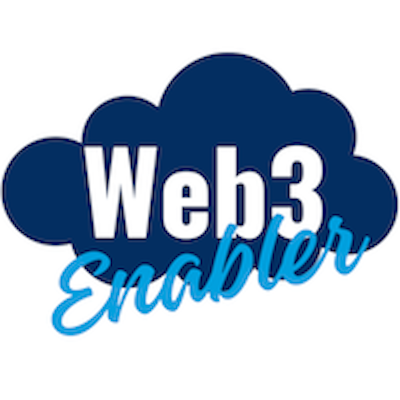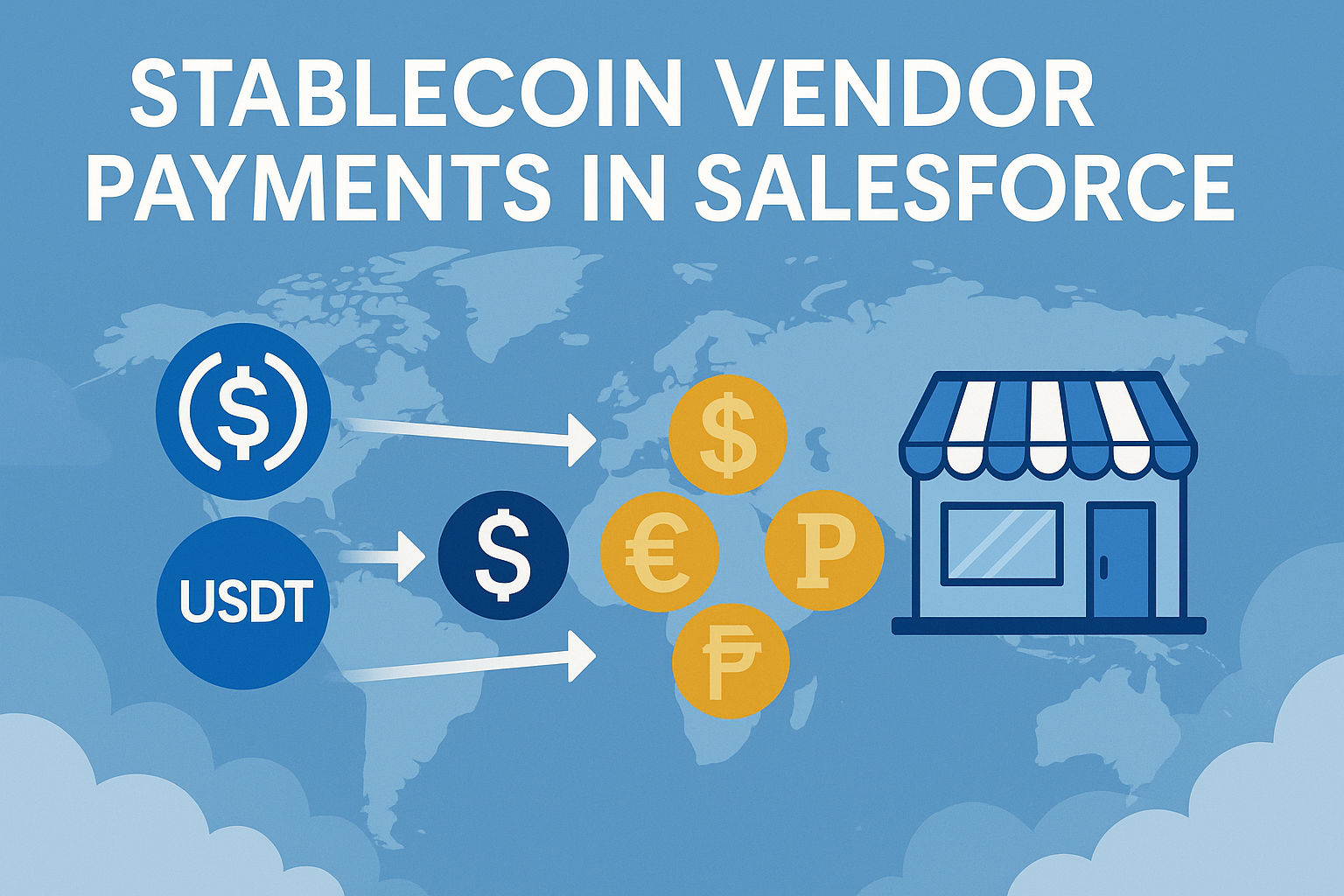Circle Arc is a payment-focused Layer 1 designed to make stablecoin transactions predictable, fast, and enterprise-ready. By using USDC as native gas, introducing Paymasters for clean cost accounting, and integrating with Salesforce via the Salesforce Native Circle Programmable Wallet, Arc removes the operational friction that has slowed real-world blockchain payments. This post explains what Arc changes, how it fits into existing finance stacks, and why enterprises should pay attention now.
Executive Summary
Circle has introduced Arc, a new Layer 1 (L1) blockchain specifically designed for payment use cases, marking a significant advancement in the blockchain payment ecosystem. Unlike general-purpose L1s, Arc focuses on simplifying and streamlining payments by using USDC as native gas, eliminating cryptocurrency volatility concerns. This innovation allows businesses to pay vendors and partners using stablecoins directly, with a designated Paymaster account to handle transaction fees transparently and efficiently. Arc integrates seamlessly with Circle’s existing platforms and tools, including an upcoming Salesforce-native Circle Wallet integration, enabling companies to send, receive, and manage payments in USDC or other stablecoins directly within their existing systems.
A major highlight is the built-in foreign exchange (FX) functionality that enables seamless currency conversion, allowing recipients to settle in their local currencies without manual intervention. The platform supports on-ramps via ACH, wire, or SWIFT, with the ability to off-ramp funds into bank accounts, reducing friction for businesses adopting crypto payments. Furthermore, Arc supports micropayments through the HTTP 402 protocol, enabling pay-per-use services without requiring traditional account setups or credit cards. This innovation opens new possibilities for API monetization and AI service payments, simplifying interactions across multiple platforms with just USDC.
Circle’s ecosystem also includes USYC, a yield-bearing stablecoin allowing businesses to earn interest on treasury holdings, all integrated natively within Salesforce. The platform supports multiple stablecoins like USDC and Tether (USDT), allowing multi-currency operations tailored to global client bases, especially in regions like Asia and Latin America. This comprehensive suite of tools aims to replace costly international wire transfers and credit card fees, providing businesses with 24/7 instant payments, better expense tracking, and reduced operational overhead. Circle and its partners are actively offering bespoke implementation and self-hosted solutions for companies ready to adopt blockchain-based payments seamlessly.
Why a payment-first L1 matters
Most general-purpose chains weren’t designed around billing and settlement primitives. Arc narrows the scope to the core jobs of moving value, accounting for fees, and settling across borders. Using USDC as native gas eliminates volatility in fee budgeting and lets finance teams forecast costs in dollars rather than tokens.
USDC-as-gas and Paymasters in practice
With Arc, a Paymaster wallet can absorb network fees while the operating wallet sends exact-amount payments. Instead of instructing AP to send 400.03 USDC to cover gas, you send 400.00 and let the Paymaster settle the cents. This separation mirrors established corporate card vs. expense-account patterns and makes reconciliation cleaner. For enterprises that prefer a single wallet, the same pattern works without segregation; accounting can still attribute fees at the ledger level.
For deeper background on stablecoin operations in Salesforce, see:
Accept USDC in Salesforce,
Accept USDT in Salesforce,
and
Blockchain Payments for Salesforce.
Salesforce Native Circle Programmable Wallet
Arc’s design pairs with the Salesforce Native Circle Programmable Wallet so teams can initiate, approve, and reconcile transactions without leaving CRM workflows. On-ramps via ACH, wire, or SWIFT load stablecoins to programmatic wallets; off-ramps return proceeds to bank accounts. Because the wallet is native to Salesforce, payments can be triggered from Opportunities, Orders, or custom flows, and mapped to cost centers for audit.
FX and global settlement
The Circle Platform’s built-in FX allows payers to fund in USDC and recipients to settle in local currency, reducing the need for manual off-ramp steps. For procurement teams paying hundreds of vendors across regions, this compresses multi-day wire timelines into near-instant settlement, with consistent fees and full ledger transparency.
Micropayments with HTTP 402
Arc enables pay-per-use models by pairing USDC payments with HTTP 402 semantics. Instead of creating accounts, storing cards, and managing API keys, a client can authorize spend limits and pay for each request on demand. This is especially attractive for AI inference, data enrichment, or content generation services where usage is bursty and per-request pricing is expected.
Treasury options with USYC
USYC introduces an interest-bearing stablecoin for treasury management. Enterprises can segment operational balances from treasury holdings, earn yield on idle funds, and move capital back to operating wallets when needed. Because this lives alongside the same payment rails, treasury and payments share the same policy controls and audit visibility.
Regulatory alignment: MiCA and the GENIUS Act
Stablecoin operations increasingly need to align with regional rules. Arc’s focus on fiat-referenced tokens like USDC and EURC supports compliance-aware deployments under the EU’s MiCA regime and the U.S. GENIUS Act framework. Enterprises can standardize controls while serving customers in Asia, Latin America, and beyond, including acceptance of Tether (USDT) where preferred.
Implementation path
- Stand up Paymaster and operating wallets in Salesforce.
- On-ramp via ACH, wire, or SWIFT to fund USDC balances.
- Configure vendor profiles, approval limits, and Paymaster fee policies.
- Pilot USDC payouts to a subset of vendors; expand to USDT/EURC as needed.
- Enable off-ramps and FX for recipients who prefer local currency settlement.
- Evaluate USYC for treasury and cash management once payment flows are steady.
Further reading
Circle announcement: Introducing Arc, an open Layer-1 blockchain purpose-built for stablecoin finance



![Digital Asset Management in Salesforce [Guide]](https://web3enabler.com/wp-content/uploads/emplibot/asset-management-hero-1756926516.jpeg)



